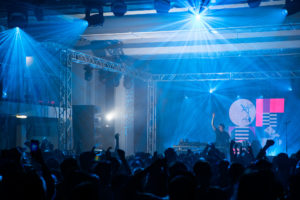
Ralph Lawson. Credit: Jodie Hartley
At three years old, inner city electronic has already become one of the most distinct events in the UK’s dance music calendar. Not only does it claim convincingly that Leeds, its host city, could well be the country’s clubbing capital, but it celebrates music in a way that few other festivals do.
What makes inner city different is the fact it is as much an education as it is a party. Throughout the day, talks and workshops provide insight from industry professionals, before an impressive line-up of DJs showcase their skills in the city’s best clubs.
The whole thing goes much deeper than your usual one-day rave. It’s about imparting knowledge and showing people how it’s done. From the experienced artists that provided the blueprint, to newer talents that learnt from them and are now experimenting in their own way, the event tells a story of continuity and progress that’s shaped and is shaping the dance music world.
Tristan Da Cunha was resident for over twenty years at renowned club Back to Basics, alongside inner city curator Ralph Lawson. Today, he’s delivering sets, talks and workshops. I sit down with the lead figure in Leeds’s rise, and he gets to the heart of the festival’s philosophy:
“It’s important for the scene to have the knowledge passed on for generations. It’s important for people to understand it’s not just about going out partying and stuff – there’s a lot that goes on behind the scenes to make the party happen… the next generation need to know this to be able to carry the torch on.”
You can tell inner city cares more about knowledge-sharing and lesson-learning than profit margins. Throughout the event, I’m given a masterclass in why this ethos makes the festival and the city of Leeds so special.
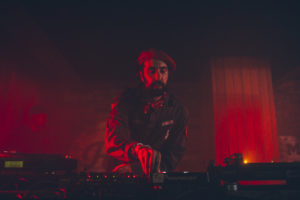
Tristan Da Cunha. Credit: Wisdom Makubile
The headmasters
“It’s a way of fertilising the culture, you’re passing on knowledge, you’re allowing people to tap into your years of experience, and they might come away from that really inspired and go and put out an album or set up a label now they’ve seen how to do it.”
In the inner city spirit, I try to get as much insight from Tristan as possible and end up squeezing out some glorious soundbites on an array of topics. Here’s Tristan Da Cunha on his time at Back to Basics:
“If you ask the majority of people who’ve started nights in Leeds, they were probably inspired by dancing at Back to Basics. And even the kids who couldn’t get a gig at Basics went and started their own parties. Basics was the foundation… and I’m proud of that.”
On DJ’s curating festivals:
“When you’re a DJ, you’ve done enough crap festivals that you just naturally want to put the eye on details and all the things that make the dancing and listening experience – it makes a huge difference having them led by an artist, in terms of the structure, the ergonomics… These sorts of festivals are much more enjoyable for music lovers than something that’s based more around entertainment.”
On Andrew Weatherall, who sadly passed away last month and was due to play inner city:
“He’s irreplaceable. There’ll never be another Andy Weatherall. The things he stood for – excellence, quality, individuality, integrity – are all the things that really stand the test of time. If I can check out the party with a little bit of the respect that he’s earned then I’ll be a happy man.”
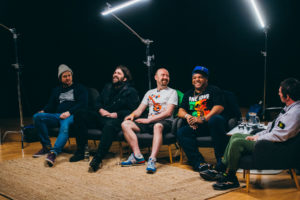
‘The Importance of Sound’ with Ryan Shaw, Tom Smith, Mr Scruff, Mark Iration (L-R). Credit: Elouisa Georgiou
Tristan heads a long line of legends I get to hear throughout the day.
‘The Importance of Sound’ panel at Leeds College of Music includes industry veterans Mr Scruff and Mark Iration. Iration, famous for his sound-system designs and dub reggae production, shares inspiring anecdotes of taking abandoned TV speakers and stacking them in his auntie’s old wardrobe.
At the Refectory, when the dancing really starts, festival host Ralph Lawson welcomes everyone with the kind of cutting house music that got him to where he is now.
Following him are Orbital, the night’s main event. They start, frustratingly, with an uncharacteristic Ibiza-y sound. But whilst a world conquering force like Orbital have a weapon like ‘Halcyon On and On’, one can’t complain for too long. The iconic chorus of strings and singers is repeatedly pulled back like a set of blinds into the song, elevating the room in a way nothing else has been able to since 1992.

Orbital. Credit: Jodie Hartley
British master of techno Surgeon bares his skills at The Warehouse. His beat selection knifes you open and punches your insides in the best way possible. Titrating layers and layers of industrial noises, his set is a textbook answer.
Craig Richards and Nicolas Lutz wrap up Wire with an experienced back-to-back. They draw the songs out with strict vinyl mixing, favouring a classic Detroit and deep house catalogue that makes the 5:30 curfew even less welcome. Richards has his own festival – Houghton – and it’s fitting that another DJ of the ‘curation generation’ should expertly bring Lawson’s line-up to a close.
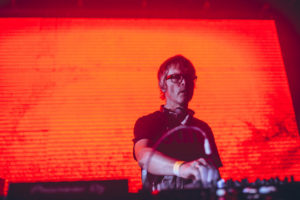
Surgeon. Credit: Wisdom Makubile
The top of the class
“The festival draws on the local talent but also mixes that with international talent, but Leeds has always been that kind of city anyway.”
It’s the younger artists who’ve learnt the ropes and are making their own waves that raise the standard entirely. But far from this being a reproach of the older representatives, this is almost certainly the way Ralph, Tristan and the rest of their generation would want it.
Also on the ‘Importance of Sound’ panel are Ryan Shaw and Tom Smith, who cite Iration and Scruff as influences. Tom strives to make pre-soundsystem music sound like it was made this year, whilst supporting young creatives through his organisation Cosmic Slop. Ryan’s equipment technology is globally recognised as more and more DJ’s and venues purchase his elite touch. Both have reproduced the innovation and precision that made their predecessors such vital figures.
Over the past decade, Weirdcore has garnered fame for designing the most famously mind-fucking music videos and concert visuals out there. During ‘The Impact of Visuals’, he talks through his process, some of his footage, and his experience of working with artists, from the good (Aphex Twin) to the bad (Tame Impala) to the unlikely (Miley Cyrus). For someone with a lot of career left ahead of them, being the only person who can do what you do is not a bad place to be.
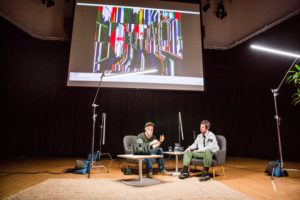
Weirdcore. Credit: Georgina Harris
Sheaf St hosts some of the best emerging selectors working today, including Leeds’s very own Zoya and Zoe Pea, who back-to-back for some early evening disco and house to get the night time started. Bristol’s Manami follows with Italo-driven upbeat bangers, mixed confidently and tuned in to the crowd’s optimism. All show signs that they’ll be scaling the line-up bill in no time.
There’s plenty of provision at the darker end of the spectrum too. Alienata slaps the Warehouse awake with Berlin-inspired quickness. Her more patient approach to mixing is balanced by her techno of choice, which nears the 140 bpm mark.
Karima F’s set at Distrikt brings more varied rhythm with breakbeats. The Norwegian shows she has quirky talent, and still bags bonus points for dropping one of the better remixes of Beyoncé’s ‘Naughty Girl’.
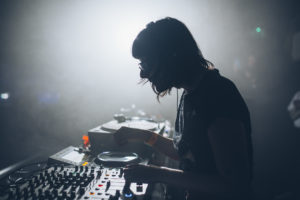
Alienata. Credit: Wisdom Makubile
Hailing from the Netherlands, Identified Patient brings Distrikt to a close in incredible fashion. He passes through genre boundaries and BPMs like Covid-19 has passed through this crowd. Aside from how scattered they are in style, he knows exactly which bit of each song he needs to use, threading through electro, dubstep, trap and acid with seething accuracy. This is as good as it gets.
These newer artists are adapting and experimenting in ways that make them the real highlights of the festival; they will surely be carrying the scene for years to come.
The school
“The thing that makes Leeds perfect for this kind of event is the size of it, it’s the perfect backdrop for events like this where you can go on foot from the College of Music to Sheaf St to Wire… and you’ve got more dancing energy leftover.
“Say you’ve never been to Leeds before, you get one ticket and get to go to every club that’s worth its salt in the city.”
There is another force behind inner city’s success. The city of Leeds and its tight group of clubs create an easily accessible collage of different spaces and sounds to make you feel part of something special.
Sheaf St keeps the warm friendly feel of its daytime cafeteria even with the dancefloor packed. The public-cubicle scribblings above the decks in Distrikt make it drip with a sense of community. Red lasers in The Warehouse and the purple mist in Wire immerse you entirely. And of course, you have the College of Music, a world-class institution which has served as the dance music industry’s textbook for today.
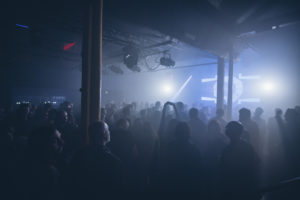
Credit: Wisdom Makubile
These are the classrooms recording inner city in all its incredible moments, the playgrounds that you never want to leave. It owes as much to Leeds’s size and outlook as it does the artists.
inner city electronic 2020 is a flawless, full-marks affair. The festival’s been an interdisciplinary performance of talent and knowledge from the heroes of house and techno of every generation. The day-time talks and night-time dances, the theory test and the practical, make it a balanced and comprehensive experience of music.
It has an ethos unlike anything else. Ralph Lawson and the organisers understand that the music fans and the residents of Leeds deserve more than entertainment. That essence of innovation, of carving your own path and helping others to carve theirs, that has typified the city of Leeds and driven DJ’s like Andy Weatherall, is felt all over the festival and will see it triumph, year after year.
Filed under: Music
Tagged with: dance music, DJ, electronica, inner city electronic, leeds, music festival, rave, techno
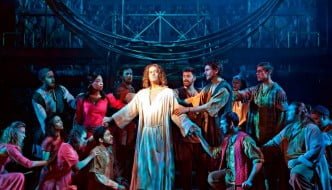
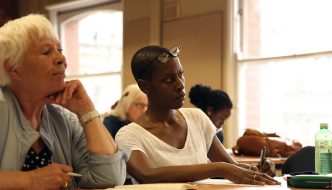

Comments